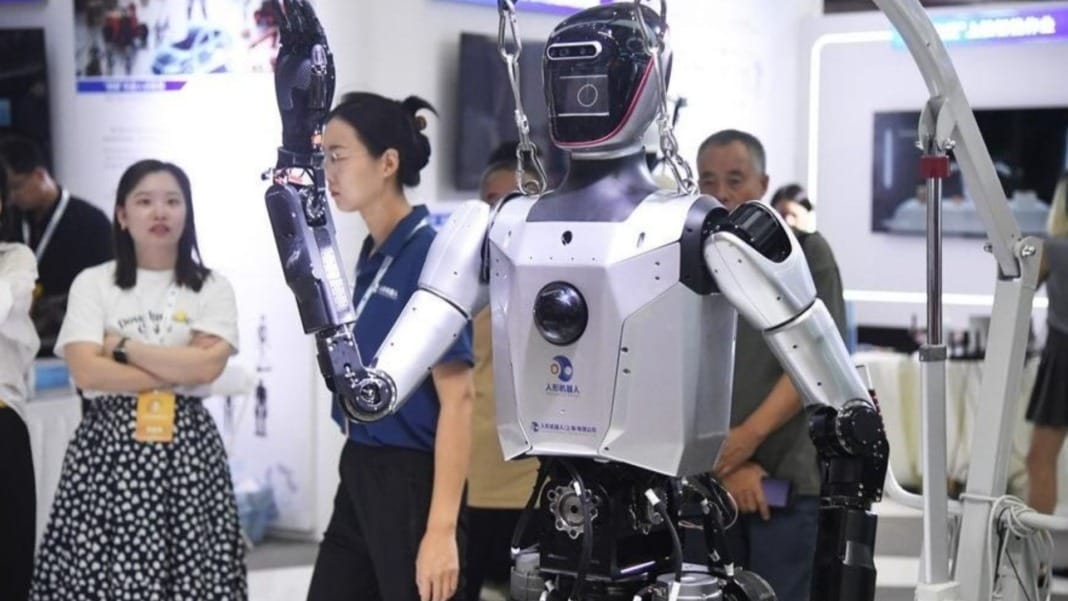The Beijing Academy of Artificial Intelligence (BAAI) has launched a new set of open-source artificial intelligence (AI) tools designed to be the “brain” for humanoid robots in China. Unveiled on June 7 during BAAI’s annual conference in Beijing, the RoboBrain 2.0 model aims to push forward the country’s robotics capabilities as it races to build more advanced machines.
This new technology comes when China’s robotics industry is rapidly growing. According to BAAI director Wang Zhongyuan, these tools could play a major role in solving some of the biggest problems facing the robotics field, such as weak AI models and the shortage of quality training data. RoboBrain 2.0, in particular, is being promoted as the world’s most powerful open-source AI model explicitly designed to enhance the intelligence of humanoid robots and other robotic systems.
RoboBrain 2.0 brings speed and accuracy
Wang highlighted the improvements made in RoboBrain 2.0 over its previous version, which was released only three months earlier. The new version offers 17% faster performance and 74% higher accuracy. These gains come mainly from advances in two key areas: spatial intelligence and task planning.
Spatial intelligence helps robots understand their physical environment more clearly, such as estimating distances between objects. Meanwhile, improved task planning enables robots to break down difficult jobs into smaller, easier steps—making them more efficient and accurate when performing real-world tasks.
RoboBrain 2.0 is part of BAAI’s larger Wujie model series. This also includes RoboOS 2.0, a cloud-based platform for sharing and distributing robotic AI tools, and Emu3, a multimodal AI system capable of generating and understanding text, images, and videos. These combined tools aim to create a full robotic learning and operation ecosystem.
“We hope many players in the field of embodied intelligence will work together with the Zhiyuan Institute,” said Wang, using the Chinese name for BAAI. He added that the organisation is already working with more than 20 leading companies and is looking to expand further through new partnerships.
Competition and collaboration in China’s robotics race
China’s push to lead the global robotics industry doesn’t rest on BAAI alone. Another major player, the Beijing Humanoid Robot Innovation Centre, introduced its AI platform earlier this year. Known as Hui Si Kai Wu, the platform is also designed to serve as a general-purpose brain for humanoid robots. The centre is known for creating the Tien Kung humanoid, which famously completed a half-marathon in Beijing this April.
The centre hopes its system will become the “Android of humanoid robots,” like how Google’s mobile operating system dominates smartphones. These developments show how multiple research groups across China are working in parallel to make the country a powerhouse in robotic technology.
BAAI is also recognised as a leader in developing large language models and the technology behind AI chatbots. Many of its past employees have found their own AI companies, using what they learned at the institute to branch out into the growing field.
However, not everything has gone smoothly. In March, the United States added BAAI to its Entity List, which bars the institute from accessing most American-made technologies. Wang called this action “a mistake,” and BAAI is now trying to convince U.S. officials to reverse the move.
New partnerships and growing global interest
Despite these challenges, BAAI continues to expand its reach. During Friday’s conference, the institute announced a new partnership with the Hong Kong Investment Corporation. This collaboration will combine talent, funding, and technological resources to boost AI innovation and support start-ups.
The conference drew a large audience, including over 100 international AI researchers and more than 200 industry professionals. Executives from some of China’s top tech firms—such as Baidu, Huawei, and Tencent—were in attendance, along with representatives from rising robotics and AI start-ups like Unitree Robotics, Zhipu AI, and Shengshu AI.
With RoboBrain 2.0 now available as open source, you can expect even more developments in China’s robotics sector as companies and researchers work together to create the next generation of humanoid machines.





